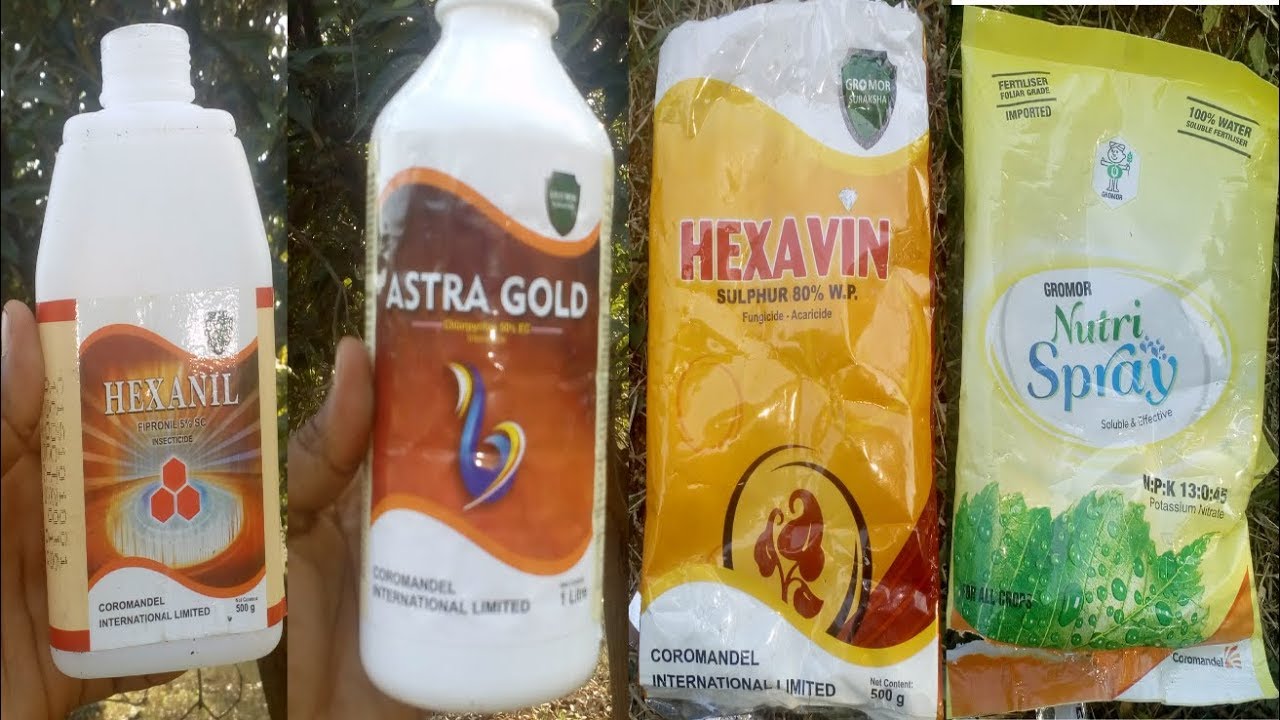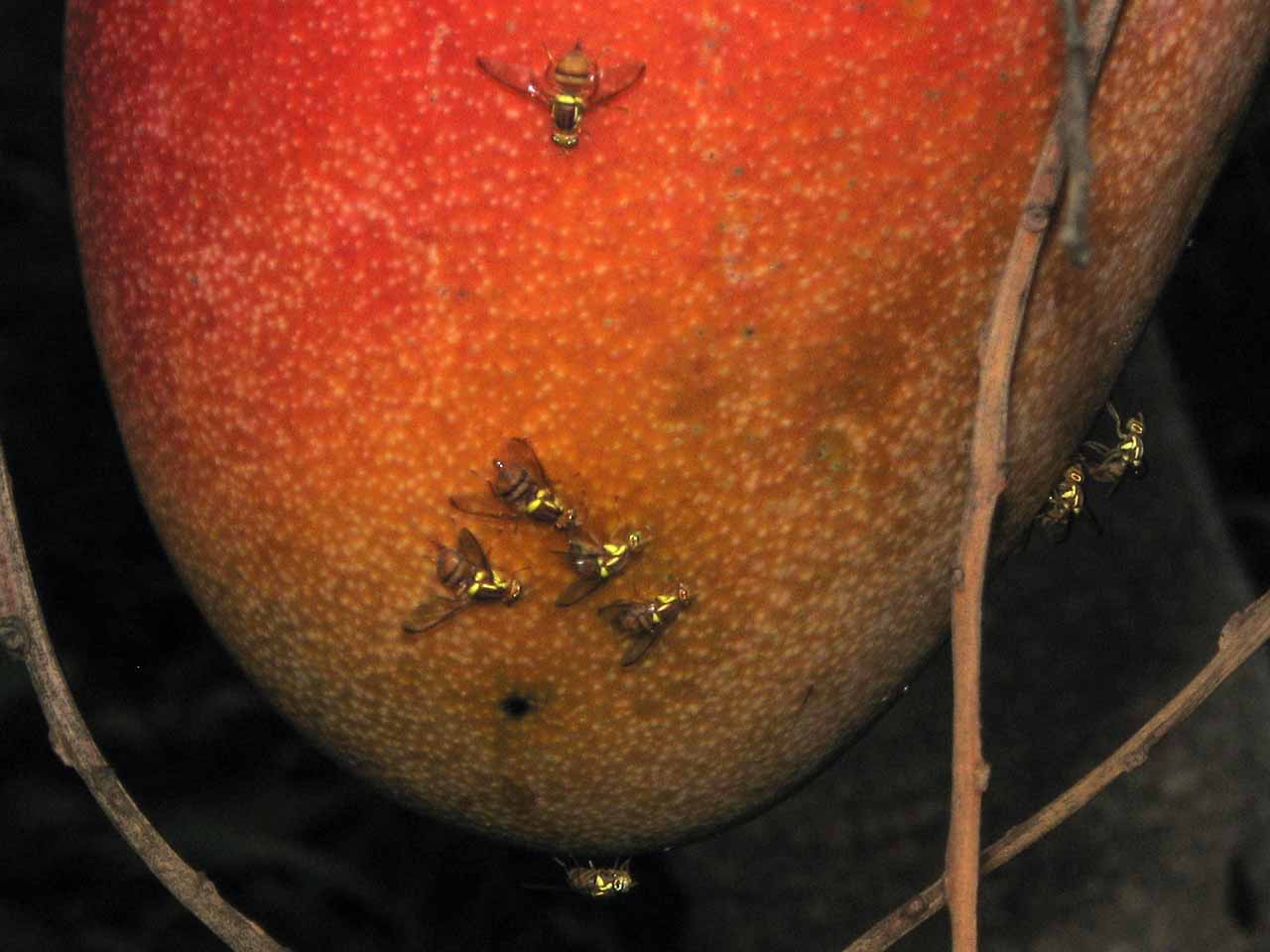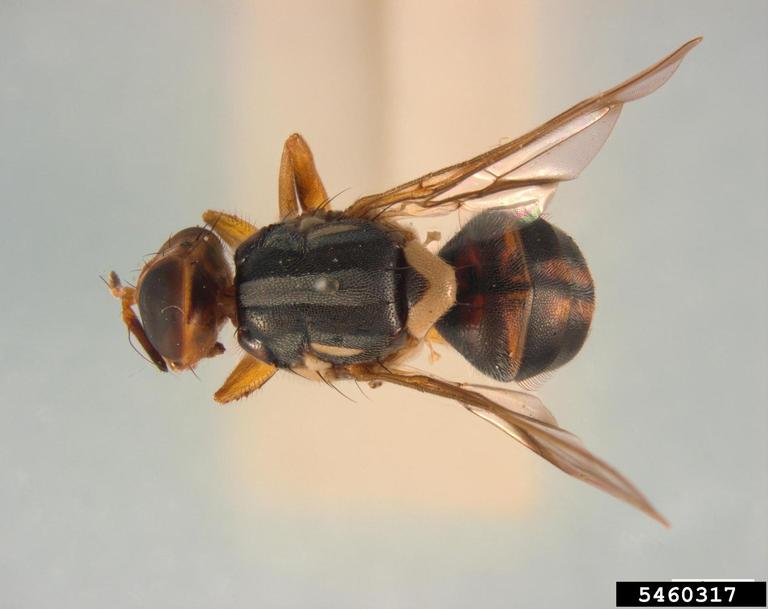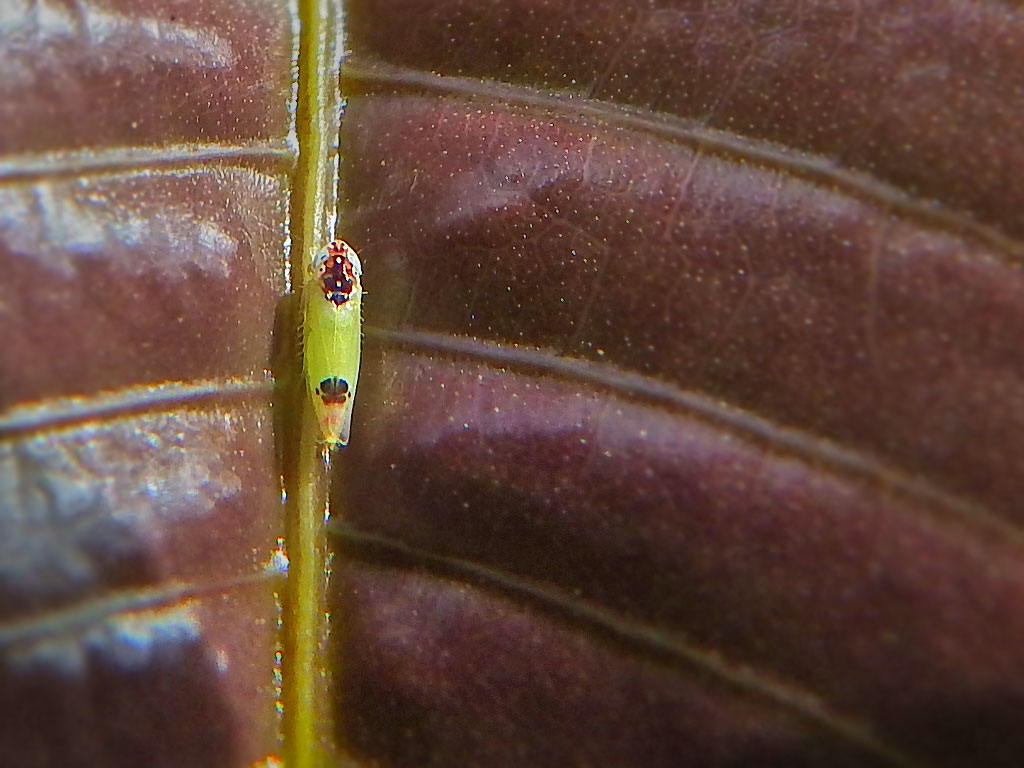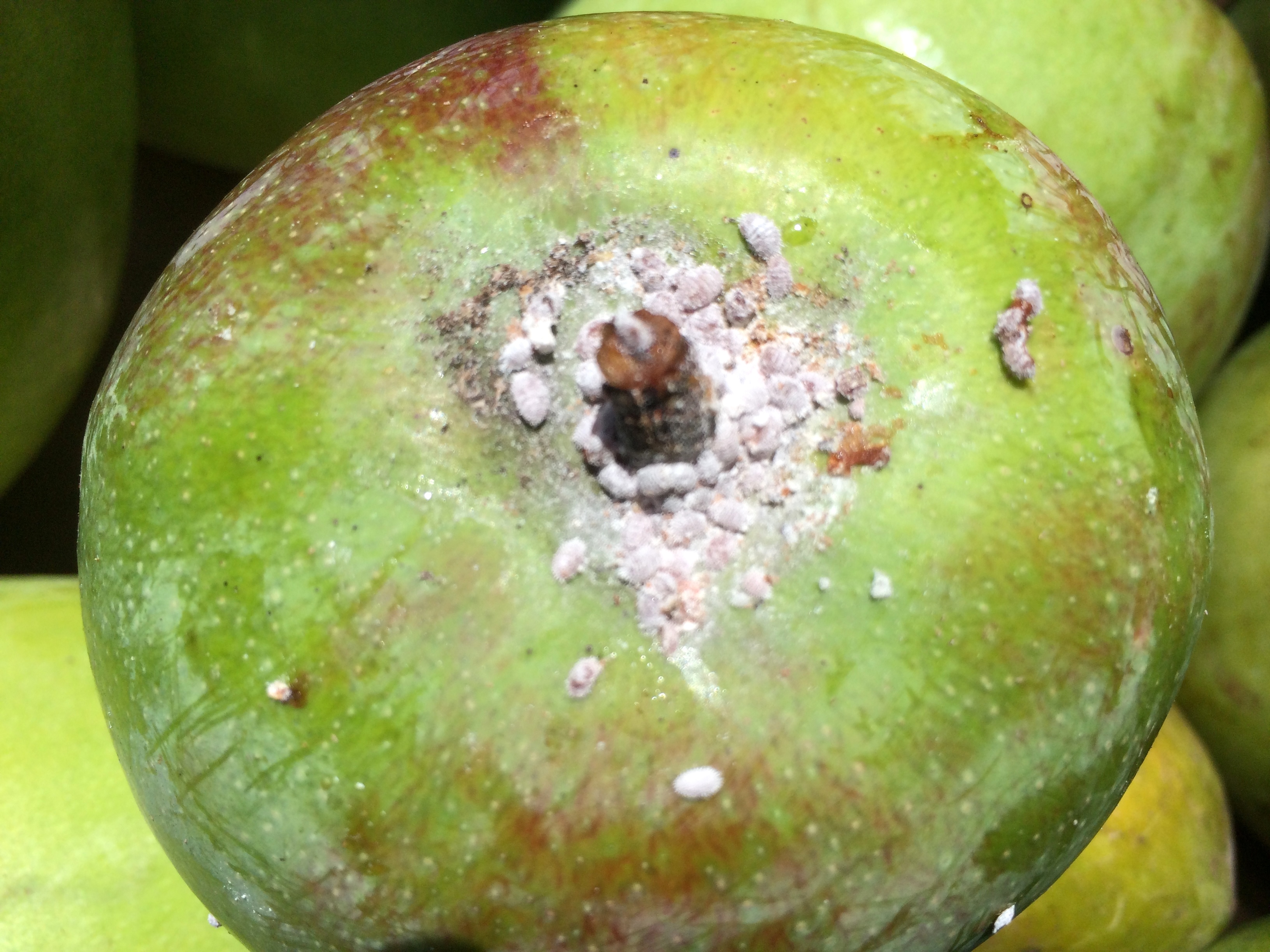Insecticide For Mango Tree
Mango, Mangifera indica, is an evergreen tree in the family Anacardiaceae grown for its edible fruit. The mango tree is erect and branching with a thick trunk and broad, rounded canopy. The leaves of the tree are are shiny and dark green. They are either elliptical or lanceolate with long petioles and a leathery texture. The tree produces dense clusters of flowers with cream-pink petals on branched panicles. The mango fruit is roughly oval in shape, with uneven sides. The fruit is a drupe, with an outer flesh surrounding a stone. The flesh is soft and bright yellow-orange in color. The skin of the fruit is yellow-green to red. Mango trees can grow to a height of 45 m (148 ft) and can live for in excess of 100 years. Mango is believed to originate from India or Burma (Myanmar).
Pests
Category : Insects
Fruit fly Ceratitis cosyra
Bactrocera obliqua
Bactrocera frauenfeldi
Anastrepha spp.
Symptoms
Cause
Comments
Management
1. Collect the fallen fruits and destroy them. 2. Also harvest fruits early to reduce flies damage . 3. Use traps to monitor fruit flies. Traps can be purchased in the market or one can prepare themselves. Take plastic container with lids (one quarts yogurt container is fine). Drill holes (10 to 16 holes) that are 3/16-inch in diameter around the upper side of the container. Add 1 to 2 inch of pure apple cider vinegar (not flavored one) and a drop of unscented liquid dishwashing soap into the container. Hang the container in shade near berry trees before fruits ripening and check the traps frequently for flies. Change the vinegar every week. 5. Spraying protein bait under leaf surface attract flies to single spot which make easier to kill them. 4. If infestation is severe spray suitable insecticide.
Mango hoppers Idioscopus clypealis
Idioscopus nitidulus
Amritodus atkinsoni
Symptoms
Cause
Comments
Mango mealybugs Drosicha mangiferae
Symptoms
Cause
Comments
Management
1. Collect and burn fallen leaves and twigs. 2. Flooding orchard with water during October kills egg present in soil. Also deep ploughing in November exposes egg to sunlight. 3. After hatching the nymphs start climbing tree and suck sap. To avoid this band the tree trunks with polythene sheet (400 gauge, 30 cm wide) at a height of about 30 cm from the ground level and apply grease at the lower edge of band. Or you can use Funnel Type Slippery Traps. 4. To control insects already on tree you can spray fish oil rosin soap or azadirachtin (neem products). 5. Also soil application of the spores of the fungus, Beauveria bassiana helps in reducing mealybug population. 6. If infestation is severe you can spray suitable insecticides
Mango tree borer Batocera rufomaculata
Symptoms
Cause
Comments
Management
Application of appropriate insecticide to the trunk and branches of the tree when adult insects are present acts to kill any eggs and larvae that are present; insecticide applied to growing twigs and green shoots may deter adult feeding; probing injury sites with a knife or piece of wire can help to destroy larvae and eggs
White Mango Scale Aulacaspis tubercularis
Symptoms
Cause
Comments
Management
Remove the infested plant parts and burn them. Spraying emulsive oil or suitable insecticides at recommended quantity will helps in reducing scale population.
Insecticide For Mango Tree
Mango is a delicious fruit that is enjoyed by many people around the world. However, when it comes to growing mangoes, there are some problems that can occur. One of those problems is pests such as insects and bugs. Insecticides are a great way to get rid of these pests and keep your mango trees healthy and growing well.
Insecticides can be used on your mango tree at any time of day or night. There are two different types of insecticides: contact and systemic. Contact insecticides kill the insects when they come in contact with them; systemic insecticides are absorbed into the plant roots, where they travel through the plant’s sap and kill insects inside it.
The best type of insecticide for you depends on the type of pest that you have in your garden. There are several different types of pests that attack mango trees, including ants, scale insects, mealybugs and more. Some insecticides work better than others depending on what type of pest you have on your tree.
Contact insecticides include horticultural oil sprays and pyrethrums powders; these sprays will kill any insects who come into contact with them but do not affect plants themselves in any way.
List Of Insecticide For Mango Tree
- Special formula: specially-formulated to use on over 100 listed fruits, vegetables, and citrus plants to kill insects and prevent new infestations
- Insect killer: kills Asian Citrus Psyllids, aphids, whiteflies, and more
- Season-long protection: one easy application provides season-long protection without spraying
- Rainproof protection: systemic rainproof protection is absorbs and will not wash off
- Systemic rainproof formula
- Treats up to 640 Sq. Ft. of vegetables or up to 9 fruit trees
Additional Info :
| Color | Concentrate |
| Item Dimensions | |
| Height | 10.3 Inches |
| Width | 2.7 Inches |
| Length | 4.7 Inches |
| Weight | 2 Pounds |
| Release Date | 2021-10-19T00:00:01Z |
- Controls insects, diseases and mites
- Kills insect stages, including eggs, larvae and adult. Controls aphids, mealybugs, mites, scale, whiteflies, beetles and other listed insects
- Can be used up to day of harvest
- Prevents fungal attack of plant tissues
- For use on fruit and nut trees and ornamentals
Additional Info :
| Item Dimensions | |
| Height | 7.12 Inches |
| Width | 3.68 Inches |
| Length | 2.32 Inches |
| Weight | 1.1 Pounds |
- Monterey Fruit Tree Plus for Control of Insects, Diseases & Mites Conc 1pt Fruit Tree Spray Plus is a combination of 70% Neem Oil and natural pyrethrins that provide knock down and residual insect control
- It is considered to be an insecticide, miticide and fungicide and it also controls the larval, egg and adult stage of their lifecycle
- It controls many insects such as aphids, scales, mealybugs, whiteflies, caterpillars, fungus gnats, stink bugs, ants, mites and many others
- Prevents fungal attack of plant tissue
Additional Info :
| Color | White Bottle |
| Item Dimensions | |
| Height | 1 Inches |
| Width | 1 Inches |
| Length | 1 Inches |
| Weight | 1 Pounds |
- INSECT KILLER: Kills listed insects that damage fruit and citrus trees, including aphids, whiteflies, Asian citrus psyllids, thrips, citrus leafminers and leafhoppers
- 2 MONTH PROTECTION: Prevents new infestations for up to 2 months
- NO SPRAYING: Just mix and pour concentrate at base of plants
- TREATS UP TO 9 FRUIT TREES: Apply once a year at labeled application timings.
- RAINPROOF PROTECTION: Formula is absorbed through the roots, creating internal protection so rain and water cannot wash it off.
Additional Info :
| Item Dimensions | |
| Height | 10.25 Inches |
| Width | 2.55 Inches |
| Length | 4.78 Inches |
- Insect Killer – this pest control is great for use on aphids, flea beetles, leafhoppers, trips, whiteflies, Japanese beetles, mealy bugs and many more.
- Protects fruit & nut trees – our soil drench is designed for use on tree & nut crops including Bananas, citrus, grapes, berries, pome fruits, stone fruits, cashews, pistachios, chestnuts, walnuts, avocados, Mangos and many more.
- Protects vegetables & herbs – product can be used on a variety of herbs & vegetables including Basil, Chive, Cilantro, Dill weed, Thyme, tarragon, Brussels sprouts, Cauliflower, Kale, mustard greens, Parsley, Celery, lettuce and more.
- Year-long protection – Our insecticide dissolved in water moves down through the soil, where it is absorbed by the roots. Once absorbed, it moves up through the tree or shrub providing year-long insect protection. It even protects new growth.
- Soil drench – this product mixes readily with water and should be poured over the soil around base of the plant. Not need to spray with this insecticide.
Additional Info :
| Color | 32 oz. |
| Item Dimensions | |
| Height | 1 Inches |
| Width | 1 Inches |
| Length | 1 Inches |
| Weight | 1 Pounds |
